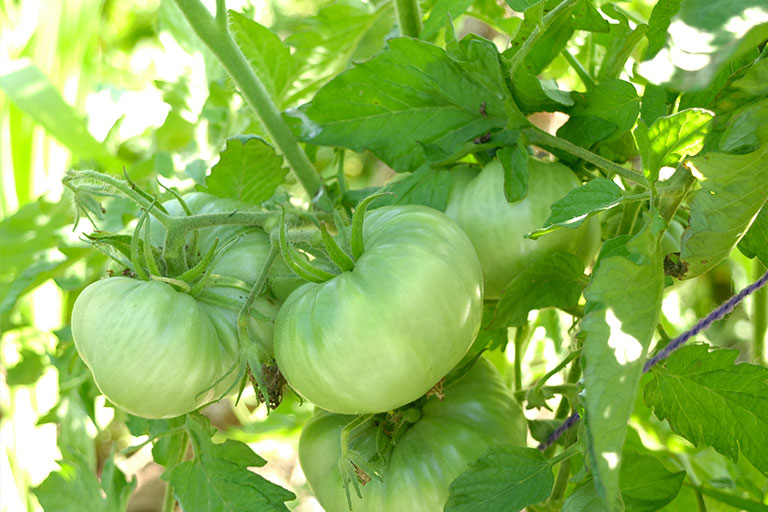By Vicki Spencer, Master Gardener
Although gardening season is winding down, September is possibly one of the busiest times of the year. Flower beds need to be tidied up and many vegetables are still waiting to be harvested. This month’s article provides a few tips for fall gardening, with a focus on ways to extend your tomato harvest because we all miss fresh garden tomatoes when winter arrives.
In September, as you enjoy cooler evenings, you are also reminded that it’s time to winterize your garden. Since fertilization is no longer necessary, turn your attention to cutting back flowers that finished blooming and removing plants that look diseased. Weeds tend to be less pervasive in autumn, so aerate the soil by giving it a good turn. If you have a compost pile, give it a good turn, too.
If your perennials are overcrowded, divide and replant them to fill in bare spots. Tender bulbs like dahlias, cannas and tuberous begonias can be dug up and stored for the winter, and you can plant spring bulbs.
By now, your vegetable harvest should be coming to an end. If you have a lot of green tomatoes left on the vine, pinch off any new flowers to let the plant focus its energy on the existing fruit. If light frost is predicted, take precautions to protect the remaining harvest. This means covering your plants at night and uncovering them during the daytime. If you have a good-sized garden, this can be a lot of work.
Since most tomato plants need temperatures above 60 degrees to ripen, you probably won’t see any new fruits forming after nighttime temperatures dip into the low 70s. So, you may as well pick all your tomatoes, including the green ones. Now you won’t worry about rushing out at night in response to the weatherman reporting sudden frost.
If a tomato plant only has green tomatoes on it, dig up the entire plant, shake off the loose soil, and hang it in the dry shelter of your garage or basement until the tomatoes ripen. It’s better to keep the plant out of direct sunlight or total darkness. Unfortunately, I don’t have a convenient place to hang the plants, so I found this process to be rather messy. Instead, I usually follow my mother’s method: Simply pick the green tomatoes and set them on the kitchen counter out of direct sunlight to ripen. If she wanted some tomatoes to ripen right away, she placed them stem-side up in a sunny windowsill.
Another way to hasten ripening is to place the tomatoes in a paper bag with a ripe apple. The apple gives off ethylene gas, which helps the tomato turn red.
When our family had a large vegetable garden, our harvest was so big that we spent days canning tomatoes and other vegetables in pint and quart jars. These were perfect for making spaghetti, stew, soup, chili and casseroles in the winter.
After many years, we tired of canning and happily discovered that it was faster and easier to simply wash the vegetables, seal them in freezer bags and place them in the freezer. Even though we had enough canned and frozen tomatoes to last until the next year’s harvest, we wanted to keep as many tomatoes fresh as long as possible to enjoy them in our salads. We did this by wrapping each tomato in newspaper and layering them in a bushel basket or cardboard box. Then we placed the containers in our cellar for safekeeping. (If you don’t have a cellar, place them in an unheated garage or cool, dark closet in your basement.) Each week we unwrapped a few tomatoes to check their progress and removed the few that rotted so as not to spoil all the others. Most of our tomatoes ripened after three to four weeks, so we enjoyed fresh tomatoes a month longer than if we had not followed this practice.
Of course, you don’t have to ripen all your tomatoes. I particularly enjoy fried green tomatoes, but there are many more creative green tomato recipes available on the internet. Either way, red or green, there is no comparison between fresh garden tomatoes and those you buy in the store. Clearly, this is why proud vegetable gardeners can spend hours discussing the trials and tribulations of growing tomatoes and the merits of their tomato harvests.

